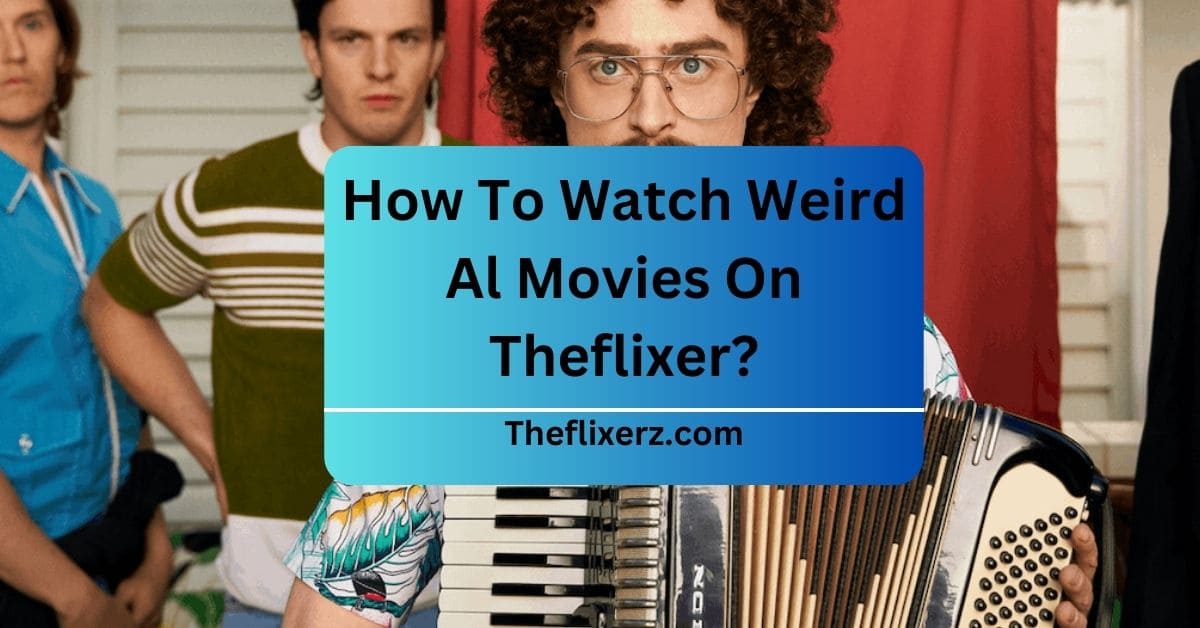
Wesomenia – A Comprehensive Guide In 2024!
For me, Wesomenia is a transformative journey where challenges become opportunities, and each twist in the path unveils a new layer of self-discovery.
Wesomenia, encompassing a medical condition and WWE fandom term, invites a diverse journey, bridging sensory challenges and the empowerment of female wrestlers in a unique and captivating fusion.
This article delves into the various dimensions of Wesomenia, exploring its history, significance, and impact on different aspects of life.
Table of Contents:
What Is Wesomenia? – Let’s Find Out!
Wesomenia is a rare medical condition involving distorted perceptions and sensations, like seeing or feeling things that others don’t. It may result from a chemical imbalance in the brain, genetics, stress, lack of sleep, or certain medications.

During Wesomenia episodes, individuals may experience disorienting or frightening sensations, but it’s typically not dangerous. The history of Wesomenia dates back over 4,000 years, is mentioned in ancient Mesopotamian clay tablets, and has roots in various cultures.
In the wrestling world, “Wesomenia” refers to a revolution led by female superstars like Becky Lynch, reshaping women’s wrestling. Beyond medical and wrestling contexts, a virtual realm called Wesomenia offers an enchanting and immersive experience.
Practicing Wesomenia daily involves kindness, active listening, and joining supportive communities. Wesomenia is not just a medical term; it symbolizes empowerment, resilience, and inclusivity in various aspects of life.
Read Also: TAELYN DOBSON – EVERYTHING TO KNOW IN 2024!
What Causes Wesomenia? – Explore The Mysteries!
Wesomenia, a rare medical condition marked by distorted perceptions and sensations, is believed to stem from various factors that influence the brain and sensory experiences. While the exact cause remains elusive, several contributing factors are associated with the onset of Wesomenia episodes.
1. Chemical Imbalance in the Brain: Wesomenia may be linked to imbalances in brain chemicals, disrupting the normal functioning of sensory pathways and leading to perceptual distortions.
2. Genetic Predisposition: Evidence suggests that genetics may play a role in Wesomenia, as the condition tends to run in families. Inherited traits could contribute to an individual’s susceptibility to these episodes.
3. Stress, Anxiety, or Emotional Distress: Excessive stress, anxiety, or emotional turmoil can act as triggers for Wesomenia episodes. These heightened emotional states may impact the brain’s processing of sensory information.
4. Sleep Disturbances: Lack of sleep or disturbances in the sleep-wake cycle have been identified as potential triggers for Wesomenia. Disrupted sleep patterns may contribute to alterations in sensory perception.
5. Medications or Substance Use: Certain medications or substance use can potentially influence brain function and sensory processing, contributing to the occurrence of Wesomenia episodes.
6. Underlying Medical Conditions: Various medical conditions, such as migraines, seizures, or dementia, may be associated with Wesomenia. The presence of these conditions can increase the likelihood of experiencing perceptual distortions.
What Are The Treatment Options For Wesomenia? – You Should Know!
Wesomenia, characterized by distorted perceptions and sensations, requires a comprehensive approach for effective management. While the exact cause remains unknown, various treatment options aim to alleviate symptoms and enhance overall well-being.

1. Therapeutic Interventions:
Therapeutic interventions are fundamental in Wesomenia management, with Cognitive Behavioral Therapy (CBT) serving to identify and modify maladaptive thought patterns, promoting healthier perceptions and responses.
Psychotherapy, within a safe and supportive setting, delves deeper into the root causes of Wesomenia, facilitating exploration and coping mechanisms for sustained symptom relief.
Integrating these evidence-based therapies empowers individuals with practical tools and insights, fostering resilience in the face of Wesomenia’s challenges and promoting lasting psychological well-being.
2. Medication Management:
It involves a nuanced approach to address specific symptoms and enhance overall mental well-being. Antipsychotic medications regulate neurotransmitters, mitigating perceptual distortions and promoting cognitive stability.
Additionally, mood stabilizers play a crucial role in managing mood fluctuations, fostering emotional equilibrium during Wesomenia episodes.
Close collaboration with healthcare professionals is essential for ongoing assessment and adjustment of medication regimens to ensure optimal effectiveness and minimal side effects, tailoring the pharmacological approach to the individual’s unique needs.
3. Lifestyle Modifications:
Lifestyle modifications play a crucial role in the management of Wesomenia, emphasizing holistic well-being. Beyond sleep hygiene and stress management, individuals are encouraged to prioritize regular physical activity, fostering a healthy mind-body connection.
Balanced nutrition, hydration, and mindful practices further contribute to overall stability, creating a foundation for symptom resilience.
By adopting a comprehensive lifestyle approach, individuals can proactively empower themselves in mitigating potential triggers and enhancing their capacity to navigate the challenges associated with Wesomenia.
4. Genetic Counseling:
Incorporating genetic counseling into Wesomenia management involves thoroughly examining familial patterns to unravel potential genetic predispositions. Genetic counselors work closely with individuals to assess family medical histories, identifying hereditary factors that may contribute to Wesomenia.

This personalized exploration aids in understanding the genetic landscape, enabling informed decisions about treatment strategies and offering valuable insights into the condition’s familial context.
By delving into genetic aspects, individuals gain a comprehensive perspective that informs their journey toward managing Wesomenia effectively.
5. Medical Intervention:
They involve a comprehensive assessment to identify and address potential underlying medical conditions that could exacerbate symptoms. By targeting conditions like migraines, seizures, or dementia, healthcare professionals aim to minimize contributing factors and enhance overall symptom management.
Collaborative efforts between mental health specialists and medical professionals ensure a holistic approach, addressing neurological and psychological aspects for a more effective and well-rounded treatment plan.
This integrative strategy acknowledges the interconnected nature of physical and mental health in managing Wesomenia.
6. Supportive Care:
Supportive care plays a pivotal role in Wesomenia management by fostering a stable environment for individuals. Establishing consistent daily routines promotes a sense of predictability, reducing stress and controlling symptoms.
Additionally, active participation in a Wesomenia community provides a platform for shared experiences and a network of empathetic peers who can offer valuable insights and emotional support.
Embracing these supportive measures contributes to an individual’s overall well-being, reinforcing the effectiveness of their coping strategies and enhancing their resilience in the face of Wesomenia’s challenges.
7. Individualised Treatment Plans:
Tailoring treatment involves a personalized and flexible approach, recognizing that each person’s experience is unique. This tailored strategy may include adjustments to therapeutic interventions, medication dosages, and coping mechanisms, adapting to the evolving nature of the condition.

Regular monitoring and collaboration between individuals and their healthcare team ensure ongoing refinement, optimizing the effectiveness of the treatment plan for long-term wellness.
Read Also: ABRAHAM QUIROS VILLALBA – DISCOVER NOW!
Key Practices of Wesomenia – An Overview!
| Daily Meditation or Reflection | Spend a few minutes daily focused on breathing and clearing the mind to reduce stress and gain perspective. |
| Weekly Community Service | To impact others positively, give back to the local community through volunteering, donations, or acts of kindness. |
| Annual Retreats | Take extended breaks each year for rest and reconnection with loved ones, allowing one to recharge and renew one’s purpose. |
| Life Rituals | Celebrate significant life events, such as births, coming of age, partnerships, and deaths with friends and family, acknowledging milestones. |
| Harmony | Embody the value of interconnectedness, aiming to resolve conflicts peacefully, considering different viewpoints, and maintaining positive relationships. |
| Balance | Embrace moderation in thoughts and behaviors, care for physical, mental, and emotional well-being, and find equilibrium for personal growth. |
| Collective Well-being | Prioritise the greater good, thinking about how individual choices influence the community and being willing to sacrifice for the benefit of others. |
Wesomenia In WWE – Explore Now!
In the electrifying world of WWE, “Wesomenia” isn’t a medical term but a passionate movement ignited by fans. Coined from the name of beloved wrestler Becky Lynch, known as “The Man,” Wesomenia represents the zeal and admiration towards her.
Becky Lynch’s charisma, skill, and captivating persona have reshaped women’s wrestling, breaking barriers. Iconic matches, notably WrestleMania 35, showcase the brilliance and excitement that Wesomenia embodies.
It symbolizes the empowerment and recognition of women athletes, transcending individual rivalries. Other female wrestlers like Sasha Banks and Bayley contribute significantly to the Wesomenia phenomenon.
This movement highlights the significance of representation, equality, and the spirit of remarkable athletes in WWE. Beyond a fan-driven concept, Wesomenia signifies a shift in the perception of women’s wrestling, celebrating resilience and passion.
Wesomenia Matches – A Showcase of Excellence!
In the realm of WWE, the term “Wesomenia” has become synonymous with the outstanding performances of Becky Lynch, fondly known as “The Man.” Let’s delve into the details of Wesomenia matches, exploring the electrifying moments that have marked a new era in women’s wrestling.

WrestleMania 35 (April 7, 2019):
The pinnacle of Wesomenia showcases can be traced back to WrestleMania 35, where Becky Lynch, Charlotte Flair, and Ronda Rousey collided in the main event.
The historic triple-threat match not only main-event WrestleMania but also marked the first time women headlined the grandest stage in sports entertainment.
SummerSlam 2018 (August 19, 2018):
Before her meteoric rise, Becky Lynch faced Charlotte Flair for the SmackDown Women’s Championship at SummerSlam 2018. Although the match ended in a loss for Becky, served as a turning point.
Her post-match assault on Charlotte ignited a change in character, transforming her into “The Man” and setting the stage for her journey to the top.
Royal Rumble 2019 (January 27, 2019):
Royal VictoryThe Royal Rumble 2019 further solidified Becky Lynch’s connection with Wesomenia. Initially losing to Asuka for the SmackDown Women’s Championship, Becky entered the Royal Rumble match later in the night.
Overcoming the odds, Becky emerged victorious in the Royal Rumble, earning the right to challenge for a championship at WrestleMania 35.
Impact and Legacy of Wesomenia – Let’s Discover!
The impact of Wesomenia transcends the confines of the wrestling ring, signaling a cultural shift in the perception of women’s roles in WWE. Becky Lynch’s rise as “The Man” and the Wesomenia movement have elevated women’s wrestling to unprecedented heights.

This movement has redefined the narrative, proving that female athletes can be marquee attractions, headlining major events and captivating audiences worldwide.
Wesomenia’s influence extends beyond individual matches, fostering increased visibility, longer storylines, and heightened fan engagement in women’s wrestling.
Becky Lynch’s success, emblematic of Wesomenia, has become a symbol of empowerment and recognition for women in a traditionally male-dominated industry.
The legacy of Wesomenia is etched in the annals of WWE, inspiring a new generation of female wrestlers and leaving an indelible mark on the evolution of professional wrestling.
Read Also: NBA STREAMEAST – CLICK HERE FOR A TASTE OF SOMETHING NEW!
Frequently Asked Questions:
1. Can Wesomenia be dangerous?
While Wesomenia is typically not dangerous, episodes can be distressing. It’s essential to seek professional support for proper management and to prevent future episodes.
2. How can I find a Wesomenia community for support?
You can explore local meetups through Meetup.com, search for Wesomenia groups on Facebook, check with local communities, or even consider starting your own Wesomenia meetup.
3. Are there age restrictions for experiencing Wesomenia in WWE?
WWE’s Wesomenia is a fan-driven term related to the wrestler Becky Lynch and has no age restrictions. It is a celebration of women’s wrestling achievements in the WWE.
Conclusion:
Wesomenia’s medical insights and WWE passion, exploring sensory challenges and women’s empowerment uniquely, leave a lasting impact on healthcare and professional wrestling.
You May Also Like

eggy car github
March 27, 2024
a spare can always be needed
April 4, 2024

